Keeping your Black and Decker iron clean is essential for maintaining its performance and longevity. Over time, mineral deposits from tap water and residues from ironing can accumulate on the iron’s plate, affecting its efficiency and potentially damaging fabrics.
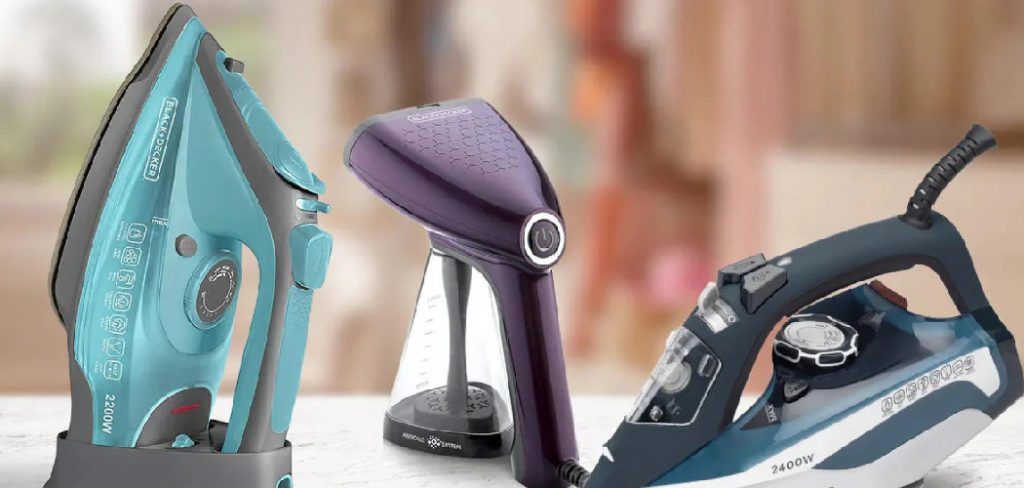
Regular cleaning ensures smooth gliding across clothing and optimal steam production, leading to perfectly pressed garments every time. In this guide, we’ll walk you through how to clean black and decker iron, preventing build-up and keeping it in top condition.
Importance of Maintaining a Clean Black and Decker Iron
Maintaining a clean Black and Decker iron is crucial for several reasons. A clean iron ensures a seamless ironing experience, preventing any unwanted snags or marks on your clothing. When mineral deposits and fabric residues build up on the iron’s soleplate, they can cause uneven heating, which may lead to scorching or sticking.
This not only impacts the fabric integrity but also shortens the lifespan of the iron itself. In addition, a clean steam iron offers optimal steam output, which is essential for effectively removing wrinkles and achieving crisp, professional results on garments.
Common Issues Caused by a Dirty Iron
A dirty iron can lead to numerous problems that may affect your ironing experience and the quality of your clothes. One prevalent issue is the discoloration or staining of garments, as mineral deposits or burnt residues on the soleplate can transfer onto the fabric. This can be particularly problematic with light-colored or delicate materials.
Additionally, an iron that hasn’t been cleaned may suffer from reduced steam efficiency, resulting in poor wrinkle removal and uneven heating. This can cause frustration, as you might find yourself repeatedly ironing the same area without seeing desirable results. A buildup of residues can also cause the iron to drag or stick to fabrics, increasing the risk of tearing or stretching.
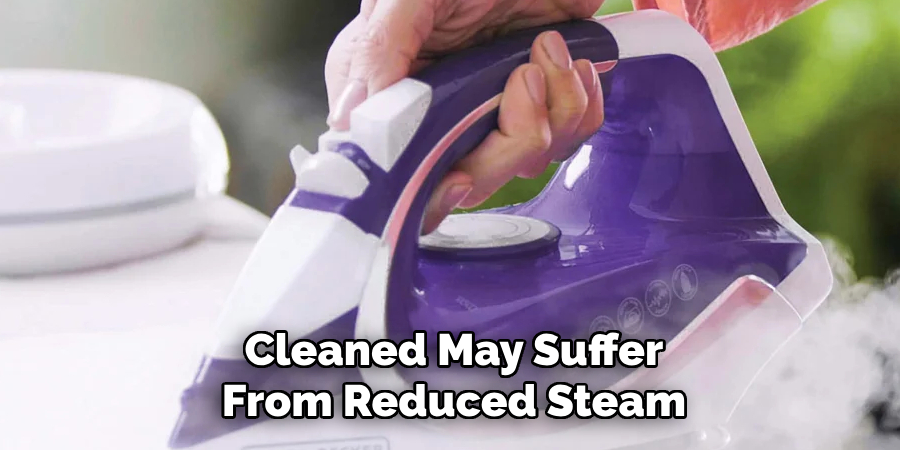
Tools and Materials Needed for Cleaning
To effectively clean your Black and Decker iron and keep it functioning optimally, you will need a few essential tools and materials. Here’s a list to help you get started:
- White vinegar: Known for its natural cleaning properties, white vinegar helps in dissolving mineral deposits and residues on the iron.
- Distilled water: Using distilled water for cleaning and regular use can prevent new mineral buildup on your iron’s soleplate.
- Microfiber cloth or soft cloth: Ideal for wiping down the iron’s surface without scratching it.
- Cotton swabs: Useful for cleaning small crevices and the steam vents of the iron.
- Baking soda: A gentle abrasive that can be used to create a paste for removing stubborn stains on the soleplate.
- Old toothbrush: Helps scrub the soleplate and iron’s exterior with precision.
- Iron cleaner (optional): Specially formulated iron cleaners can be used for intensive cleaning or stubborn grime.
By gathering these materials, you’ll be well-prepared to clean and maintain your Black and Decker iron efficiently.
10 Effective Methods on How to Clean Black and Decker Iron
1. Use a Baking Soda Paste for Stubborn Stains
For tough stains on the soleplate, a baking soda paste is a simple and effective solution. Mix 2 tablespoons of baking soda with 1 tablespoon of water to create a thick paste. Apply it to the dirty soleplate and gently scrub with a non-abrasive sponge.
Pro Tip: Avoid getting the paste into the steam holes, as it may cause clogs.
2. Clean Steam Holes with Cotton Swabs
Mineral deposits can block the steam holes and reduce the efficiency of your iron. Dip a cotton swab in a mixture of water and vinegar, and carefully clean each hole. This process will help restore proper steam flow.
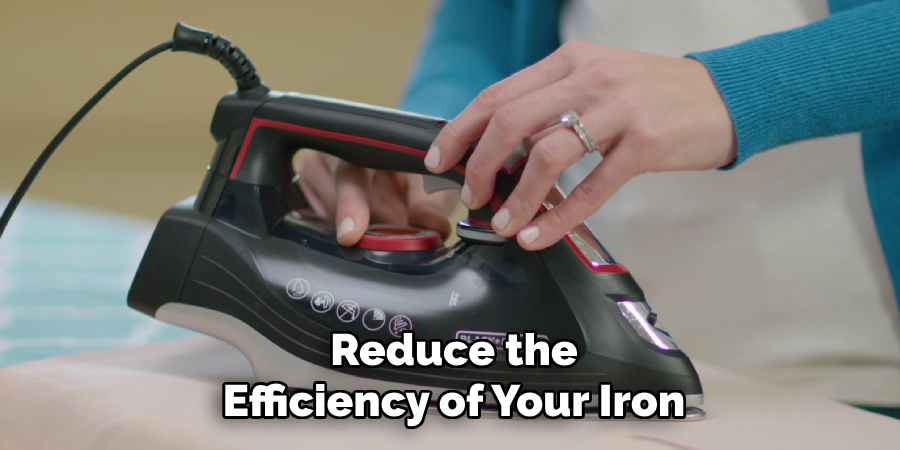
Why It Works: The vinegar naturally dissolves built-up minerals without damaging the iron.
3. White Vinegar for Deep Cleaning
White vinegar is an excellent natural cleaner. Fill the water tank with equal parts white vinegar and distilled water. Set the iron to steam mode and allow it to run until half of the solution evaporates. Then, rinse the tank with distilled water to remove any vinegary residue.
Reminder: Perform this method in a well-ventilated area due to the vinegar’s strong odor.
4. Try Salt for Sticky Residue
If your iron’s soleplate has sticky residue, table salt can help. Place a clean cloth on your ironing board and sprinkle a generous amount of salt over it. Heat your iron to medium, and rub it over the salt to remove the residue.
Quick Safety Note: Ensure the iron has no water inside to avoid causing steam.
5. Unclog with Distilled Water
Hard water can cause blockages in the steam system. Filling the iron’s water tank with distilled water regularly helps prevent mineral build-up and ensures smooth operation. Use this water exclusively for your Black and Decker iron to prolong its life.
6. Use a Damp Cloth for Regular Maintenance
Prevent dirt and residue build-up by wiping the soleplate with a damp cloth after each use. Make sure the cloth is soft and lint-free to avoid scratching the surface.
Maintenance Tip: Perform this easy step after the iron cools down slightly but is still warm to the touch.
7. Employ Toothpaste for Burn Marks on the Soleplate
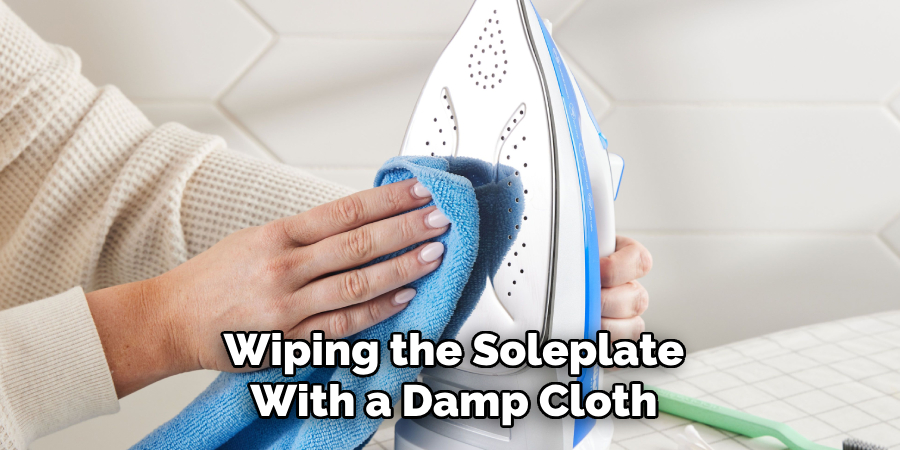
Toothpaste isn’t just for your teeth—it’s great for removing burned-on gunk from the soleplate. Apply non-gel toothpaste to the soleplate, scrub gently with a soft cloth or sponge, and wipe clean with a damp cloth.
8. Make Use of Iron Cleaning Products
For a hassle-free alternative, iron cleaning products are specifically designed for tasks like removing tough stains and keeping the soleplate smooth. Follow the instructions on the product carefully for best results.
Example: Many users recommend iron cleaner sticks, which are safe and effective for most irons, including Black and Decker models.
9. Descale with Lemon Juice
Lemon juice is another natural descale option. Fill the water tank with a mixture of 1 part lemon juice to 3 parts distilled water. Allow the iron to steam for 5 minutes, then rinse the tank thoroughly. The acidic properties of lemon juice dissolve mineral deposits effectively.
10. Avoid Future Stains with Prevention Techniques
Prevention can save you time and effort. Always use distilled water, clean the iron regularly, and store it properly to avoid scratches or dust accumulation. Additionally, never run your iron over zippers, snaps, or buttons, as these can damage the soleplate.
A Cleaner Iron for Better Results
Keeping your Black and Decker iron clean ensures smoother ironing sessions, fresher-looking clothes, and a longer lifespan for your appliance. Whether you prefer natural solutions like vinegar and baking soda or opt for specialized cleaning kits, the methods above make it easy to restore your iron to its original gleam.
Maintenance and Upkeep
Regular maintenance will not only keep your Black and Decker iron in top condition but also enhance its performance over time. Here are some key maintenance tips:
- Regular Cleaning: As outlined in the cleaning methods, regular cleaning with non-abrasive materials and solutions is crucial. Aim to clean your iron’s soleplate and steam vents every few weeks, especially if you use it frequently.
- Empty the Reservoir: Always empty the water reservoir after each use. Stagnant water can lead to mineral deposits and unpleasant odors.
- Store Properly: When not in use, store the iron upright in a dry and dust-free location. This prevents damage to the soleplate and keeps the appliance safe from accidental knocks.
- Check the Cord: Inspect the power cord regularly for any signs of wear or damage. A frayed or damaged cord should be replaced immediately to prevent electrical hazards.
- Use the Right Water: Always use distilled water in your iron to minimize mineral deposition. This not only enhances the iron’s steam capability but also helps prolong its lifespan.
Things to Consider When Cleaning Your Iron
Maintaining the cleanliness and efficiency of your Black and Decker iron not only ensures optimal performance but also extends its lifespan. Here are some important considerations to keep in mind during the cleaning process:
- Safety First: Always ensure your iron is unplugged and completely cool before beginning any cleaning method. This will prevent electric shocks and burns.
- Use Appropriate Products: While it might be tempting to use any household cleaner, always opt for the recommended gentle materials like vinegar, baking soda, or specialized iron cleaners to avoid damaging the iron’s components.
- Frequency of Cleaning: Regular maintenance is key. Cleaning your iron after every few uses can prevent buildup and residue, making it easier to keep in pristine condition.
- Storage Habits: After cleaning, store your iron in a clean, dry place. Coil the power cord neatly and ensure the iron is set on its heel to avoid moisture settlement.
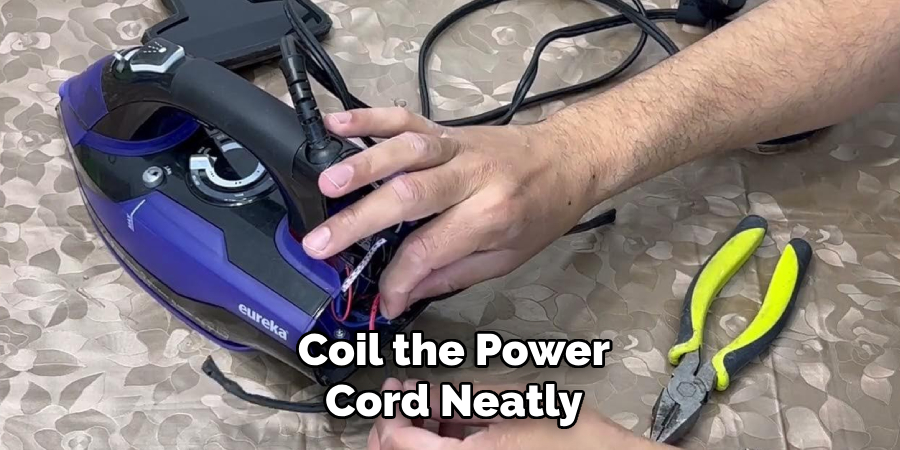
Conclusion
Proper care and maintenance of your Black and Decker iron not only ensure smooth and efficient ironing sessions but also extend the appliance’s lifespan. By employing a combination of natural remedies and tailored cleaning products, you can tackle any type of residue or build-up that might accumulate.
Remember to follow the safety precautions, such as unplugging the iron and ensuring it is cool before starting any cleaning tasks. So, there you have it – a quick and easy guide on how to clean black and decker iron.
Edmund Sumlin is a skilled author for Metal Fixes, bringing 6 years of expertise in crafting a wide range of metal fixtures. With a strong background in metalwork, Edmund’s knowledge spans various types of fixtures, from decorative pieces to functional hardware, blending precision with creativity. His passion for metalworking and design has made him a trusted resource in the industry.
Professional Focus:
- Expert in Metal Fixtures : Edmund aesthetic specializes in creating durable and innovative metal fixtures, offering both appeal and functionality. His work reflects a deep understanding of metalworking techniques and materials.
- Sustainability Advocate : He is dedicated to using sustainable practices, ensuring that every fixture is crafted with eco-friendly methods while maintaining high-quality standards.
In his writing for Metal Fixes, Edmund provides valuable insights into the latest trends, techniques, and practical advice for those passionate about metal fixtures, whether they are professionals or DIY enthusiasts. His focus on combining artistry with engineering helps others discover the true potential of metal in design.


